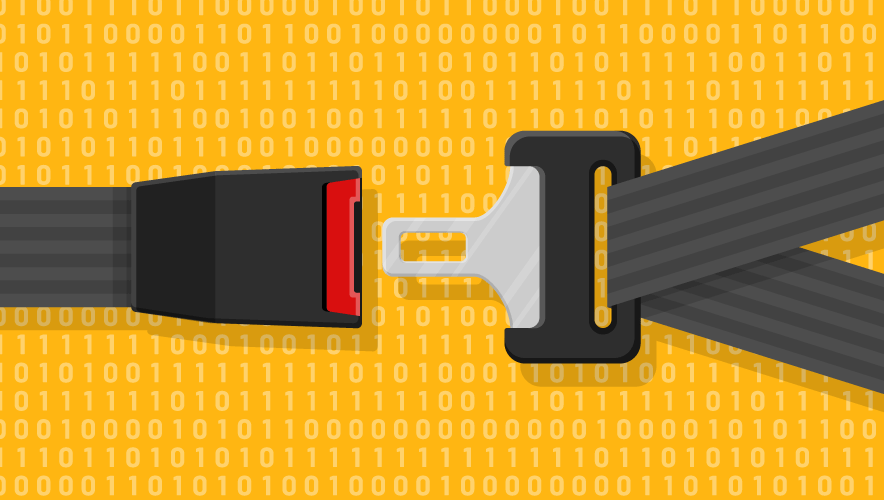The Tech Advance: How Executive Protection Leverages Technology to Protect Clients
Originally created to investigate and disrupt counterfeiting in 1865, the U.S. Secret Service (USSS) has evolved to include one of the premier executive protection (EP) agencies in the world responsible for protecting the U.S. president and vice president, high-profile designees, key locations, and special events.
To do this, the service relies on a vast number of personnel—approximately 3,200 special agents, 1,300 uniformed division officers, and more than 2,000 other technical, professional, and administrative support personnel.
“Operational personnel conduct protective security surveys and numerous special projects in supporting of Presidential, Vice Presidential, and dignitary protection requirements,” according to the USSS 2021 fiscal year report (the most recent report available). “Technical Security Investigators, Physical Security Specialists, Engineers, and Scientists ensure that the Secret Service deploys cutting-edge technology and capabilities to meet any threat directed at world leaders and their families. Counter-surveillance personnel and Intelligence Research Specialists conduct threat assessments that support protective methodology.”
SponsoredInside the Shadows of Alt-Tech Social Networks: The New Haven for Threats Against ExecutivesIn recent years, criminals and fringe groups have started moving to a growing collection of “alt-tech” social networks. And as a result, these communities have become breeding grounds for doxxings, false rumors, and violent extremists – posing a serious risk to executives and high-ranking employees. So how do protectors respond to this threat? |
Additionally, the service manages countermeasure programs against chemical, biological, radiological, nuclear, electronic, and environmental threats, as well as fully armored vehicles and counter-uncrewed aerial systems programs.
The USSS also has a substantial protective intelligence capability that draws resources from several service divisions to research, analyze, and disseminate intelligence to operations around the world. In fiscal year 2021 alone, the service produced roughly 300 assessments, 60 intelligence reports, and presented more than 125 intelligence briefings to support operations, according to the report.
When you’re doing your advance, time is critical. It’s quite literally money.
This vast infrastructure is something that many private security practitioners can only dream of having access to, says Kevin Dye, a retired Secret Service supervisor with more than 35 years of executive protection experience.
“In my role with the government, technology was everywhere. It was a symbiotic relationship—the two pieces can’t operate without each other,” Dye says. “When I came over to the private, corporate sector, all the tools and resources I had before no longer existed. I didn’t have vast amounts of information immediately available. I didn’t have 800 techs in an office in D.C. combing through records to give me the data I needed.”
Over time, and especially during the COVID-19 pandemic, Dye says he has worked with his team to identify where investments were needed to have a more effective system to support EP functions.
Intelligence Tools
The USSS relies on several divisions to provide operations teams with intelligence—including staff members who are analysts, doctors, and psychiatrists. One option for private companies that don’t have the resources to build this capacity in-house is to contract out for it.
Key for Dye was a service provider that would provide real-time data and information on security alerts in their immediate area, geolocated to individuals’ physical locations, as well as information about what was going on in the surrounding environment.
Dataminr’s solution—Dataminr Pulse—was initially attractive, but it was like “drinking out of a fire hose” for the team in place, Dye says. Dataminr is a real-time information discovery platform that corporations can use to detect potential risk and information from public data—such as social media. Dye says he needed something more paired down and digestible because in “EP, you don’t want to be looking at your phone. You want to be looking at people—at other threats,” he adds.
The continued search led him to a Canadian company, Samdesk, which worked with Dye to provide the features he was looking for to identify physical threats through a mobile application, with geolocation features that could be set by the end user. Samdesk is a global monitoring tool that can provide real-time crisis alerts to users. It uses artificial intelligence (AI) on public data sets to spot disruptive events, sending warning alerts and insights to users.
“It’s extremely good for what we do,” Dye says, adding that he uses Samdesk as a pre-advance tool. “Then we monitor Dataminr while we’re in the environment we’re in.”
Medical Support
While EP practitioners are working to protect clients from disasters and outsiders who might cause them harm, they also need to be prepared to respond should their client have a medical emergency—such as a cardiac arrest or significant allergic reaction.
Many practitioners, including Dye, are meeting this need by obtaining their emergency medical technician (EMT) certification. They are also flexing their planning processes to locate healthcare institutions near offices, homes, and travel locations should a client need to be taken to one to receive care.
“When you’re doing your advance, time is critical. It’s quite literally money,” Dye says. To help improve the speed of advance hospital surveys, he uses the application findERnow. It identifies Level 1 trauma centers in the area, allows users to pick hospitals on a map, and provides routes based on their location. Standards for Level 1 trauma centers may vary depending on the country a user is in, so Dye cautions that practitioners should double-check to make sure the hospitals identified in the application will meet their needs.
Location Risks
EP teams often travel with clients for business and personal reasons. Part of their advance work typically involves assessing the safety of a location on an itinerary—such as a restaurant for a dinner business meeting—and risks to mitigate against for that place.
For an aid to help initiate this assessment process, Dye suggests using GeoSure—an application that provides numerical ratings of places from 1 (the least safe) to 100 (the most safe).
“If you’re between 75 and 100, you’re in a decent area,” he adds. “And you can look at the ratings with different criteria or markers, such as for night time safety, LGBTQ safety, and more. That’s all covered in this program.”
Using applications like this can help save time during the advance. For instance, users can take the travel itinerary and plug in the hotel site, the locations of different meetings, and assess what steps to take to enhance their security measures depending on the ranking the application provides.
“We don’t have time and most police departments aren’t going to talk to you, so you can use resources like GeoSure to figure out what your threat environment is,” Dye says.
Technical Security Counter Measures
As part of a travel security precaution, EP teams may conduct a sweep of a client’s hotel room before their arrival to ensure that listening devices—bugs—are not in the room. This is a common practice for protective details traveling with world leaders, but some corporate teams do it as well.
If you contract this service out, it can cost $5,000 to $10,000, depending on the job and the location, Dye says. So, some organizations are investing in their EP workforces by buying the technology to conduct these sweeps and having staff become certified to use it.
Technology—as far as the advance—is integral for what you do.
One of the best known and most prestigious centers for this training is Research Electronics International (REI) in Cooksville, Tennessee, Dye says. Individuals can go through a training program—which takes typically a week or slightly longer—to learn how to use five or six different pieces of technical security countermeasures (TSCM) technology. Then the organization can conduct this service in-house.
As security teams—including EP operations—are challenged with doing more with less, technology will continue to play a role in filling the gap.
“Technology—as far as the advance—is integral for what you do,” Dye says. “Back in the heyday—the ‘60s—you went and used bodies. Nowadays, you’re not throwing people at it. You’re throwing technology at it to help you achieve your goal of protection.”
Megan Gates is editor-in-chief of Security Technology and senior editor of Security Management. Connect with her at [email protected] or on LinkedIn. Follow her on Twitter: @mgngates.














